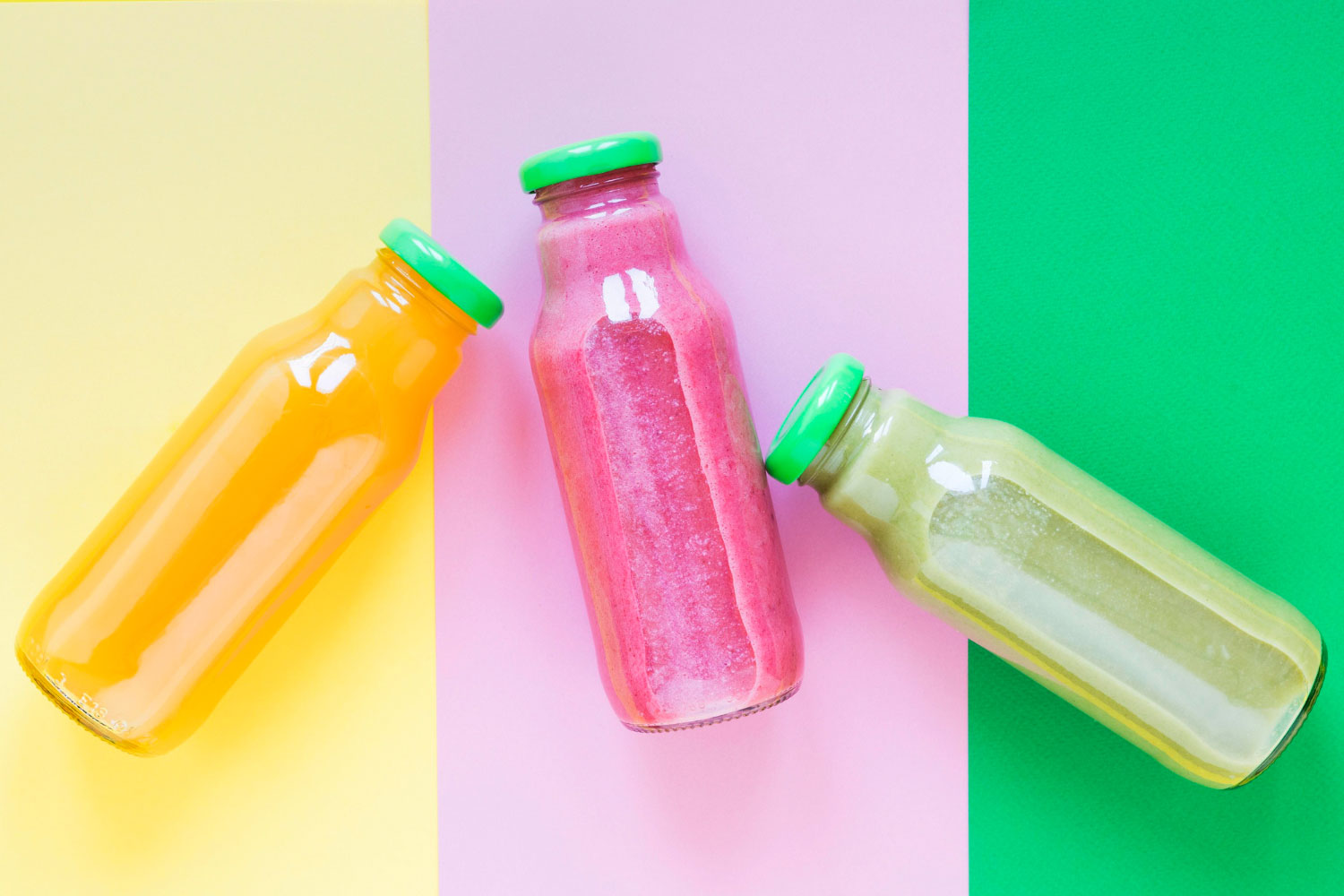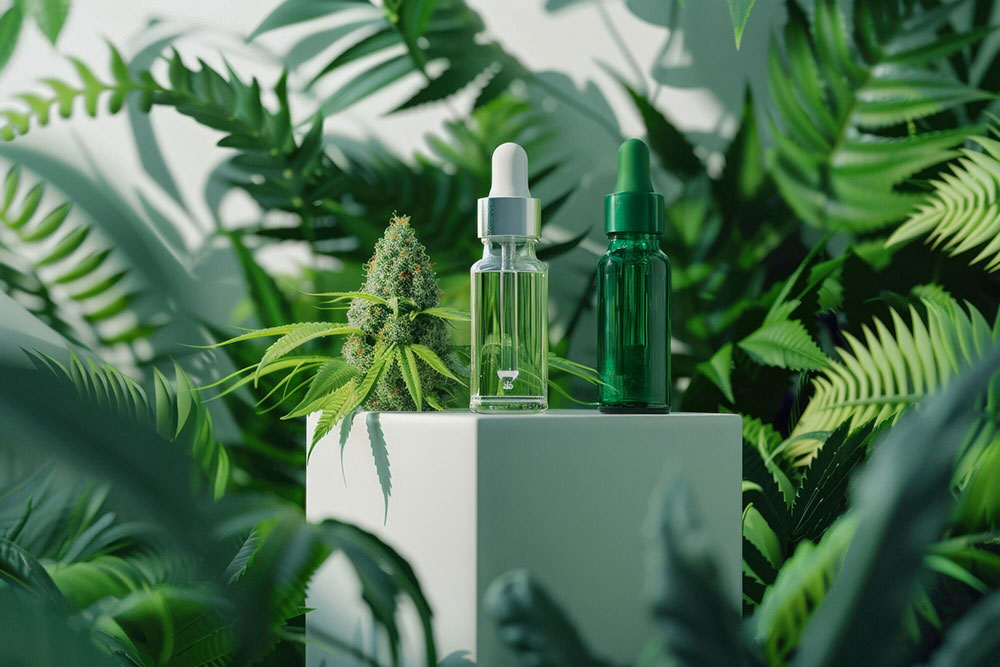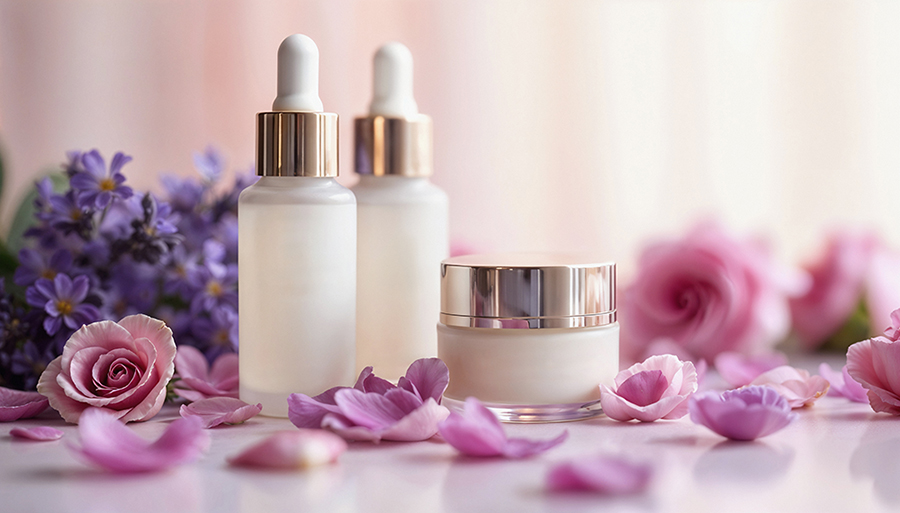The Science of Glass of Bottle Tinting – How Green Glass is Made
If you’ve ever admired a beautifully tinted green glass bottle and wondered how it gets that stunning color, you’re in for a treat! Glassmaking is a fascinating process that blends art, science, and a little bit of chemistry magic. The secret behind that vibrant green hue lies in the materials used, the melting process, and a few chemical tricks that have been refined over centuries. Let’s break it all down in the simplest way possible, so the next time you hold a glass of bottle in your hand, you’ll know exactly what makes it special.
Glass of Bottle Secret Ingredient: Metal Oxides
Every beautiful shade of green glass starts with the right ingredients, and the magic ingredient here is metal oxides—particularly iron and chromium. When manufacturers add these compounds to the molten glass mixture, they react in specific ways to produce various shades of green.
Iron oxide, found naturally in sand, creates a pale green tint, similar to what you see in old-fashioned soda bottles. But if you want that deep, rich green—often called “forest green” or “emerald green”—chromium oxide is the real game-changer. It’s the same element that gives emerald gemstones their color, and it works wonders in glassmaking too. Some variations even include copper oxide for a slightly bluish-green tint, depending on the desired final look.
Click here to learn more about the article Glass.
Turning Up the Heat: The Glass of Bottle Melting Process
Once the ingredients are mixed, it’s time to turn up the heat—literally. The raw materials, including sand, soda ash, limestone, and metal oxides, are heated in a furnace at scorching temperatures of around 1,700°C (3,100°F). At this extreme heat, everything melts into a glowing, molten liquid that looks like lava.
The cool thing about glass is that while it melts at high temperatures, it never completely turns into a liquid. Instead, it behaves like a thick, syrupy substance that can be shaped, molded, or blown into bottles, jars, or any other form. During this molten stage, the metal oxides blend completely, ensuring the final glass of bottle has an even and consistent green color.
Why Some Green Glass of Bottle Look Different
Ever noticed that not all green glass looks the same? That’s because slight variations in the chemical composition, heating time, and cooling process affect the final tint.
For example, adding more chromium creates a darker green, while higher amounts of iron result in a lighter, yellowish-green shade. The cooling process also plays a role—if the glass cools too quickly, it can trap tiny air bubbles, creating a slightly frosted or textured appearance. This is why no two batches of green glass are exactly identical!
The History Behind Green Glass of Bottle
Green glass isn’t just a modern invention; it has been around for thousands of years. Ancient Egyptians and Romans used naturally tinted green glass for decorative items, drinking vessels, and even perfume bottles. Back then, the green tint wasn’t intentional—it was just a result of impurities in the sand used for making glass.
Today, however, manufacturers deliberately tint glass green to enhance its UV protection properties and give it a premium look. Green glass bottles are especially popular for essential oils, perfumes, and wine because they help block out harmful sunlight that can degrade the contents over time. So, the next time you see a stylish green glass bottle on a store shelf, you’ll know that its color is both a design choice and a functional feature!
Why Green Glass of Bottle is Still a Popular Choice
Besides looking elegant, green glass has practical benefits that make it a favorite in packaging industries. One major advantage is its ability to protect liquids from UV rays, which helps preserve oils, beverages, and other sensitive products. Plus, glass is 100% recyclable, making it a more sustainable option compared to plastic.
The popularity of green glass also comes from its association with luxury and quality. Whether it’s a premium essential oil, a high-end skincare product, or a fine bottle of wine, green glass packaging instantly makes a product feel more sophisticated. And let’s be honest—there’s something undeniably classy about a beautifully crafted green glass of bottle sitting on your shelf. Give our unique Light Green Oil Bottle a go, we think you’ll love them.
UV Protection Benefits – Why Green Glass of Bottle is Better for Oils

If you love essential oils, you probably know they can be sensitive to light. That’s where green glass comes in! The color isn’t just for style—it actually protects the delicate oils inside from harmful UV rays that could degrade them over time.
How UV Rays Affect Oils
UV light can break down the chemical structure of essential oils, reducing their potency and even altering their scent. When oils are exposed to sunlight, they can lose their beneficial properties faster than you’d expect. That’s why using a well-tinted glass of bottle is so important for keeping your oils fresh and effective.
Why Green Glass of Bottle Works Best
Green glass acts as a natural filter, blocking out a significant portion of UV radiation while still allowing enough visible light to pass through. This helps maintain the oil’s original composition and extends its shelf life. Compared to clear glass, which offers little to no protection, green glass is a much smarter choice for oil storage.
Green Glass of Bottle Keeping Your Oils Safe
Even with green glass, it’s best to store your essential oils in a cool, dark place to maximize their lifespan. Avoid leaving bottles on windowsills or in direct sunlight for extended periods. The combination of green glass and smart storage habits will ensure your oils stay potent for as long as possible.
Why Green Glass of Bottle is Still a Popular Choice
Besides looking elegant, green glass has practical benefits that make it a favorite in packaging industries. One major advantage is its ability to protect liquids from UV rays, which helps preserve oils, beverages, and other sensitive products. Plus, glass is 100% recyclable, making it a more sustainable option compared to plastic.
The popularity of green glass also comes from its association with luxury and quality. Whether it’s a premium essential oil, a high-end skincare product, or a fine bottle of wine, green glass packaging instantly makes a product feel more sophisticated. And let’s be honest—there’s something undeniably classy about a beautifully crafted green glass of bottle sitting on your shelf.
The Psychology of Green – How Color Influences Buying Habits
Did you know that the color of a product’s packaging can influence your purchasing decisions? Green is a fascinating color that is often linked to nature, health, and tranquility. When you see a green glass of bottle, your brain might subconsciously associate it with freshness, purity, and sustainability.
Green Glass of Bottle and the Perception of Quality
People tend to associate green packaging with high-quality, organic, or environmentally friendly products. That’s why many essential oil brands and luxury skincare companies choose green glass bottles—it subtly signals that what’s inside is natural and premium. Even if you don’t realize it, your brain makes these connections almost instantly when shopping.
The Calming Effect of Green Glass of Bottle
Green is known for its soothing and calming effect. That’s why spas, wellness brands, and even tea companies often use green packaging. When you pick up a green glass of bottle, it might make you feel more relaxed and confident about your purchase.
Green Glass of Bottle Equals Eco-Friendly
In today’s world, sustainability matters more than ever, and green has become a symbol of eco-consciousness. A green glass bottle not only looks beautiful but also suggests that the brand cares about the environment. Many customers are drawn to products that come in glass rather than plastic, making green glass a strategic choice for companies looking to appeal to eco-conscious shoppers.
A Historical Touch – The Legacy of Green Glass in Packaging

For centuries, green glass has played a fascinating role in packaging, preserving everything from fine wines to everyday essentials. Long before modern manufacturing, people discovered that adding minerals like iron and copper to molten glass created that signature green hue. What started as a simple chemical reaction quickly became an iconic feature in packaging, and its legacy still thrives today.
From Ancient Craftsmanship to Modern Glass of Bottle
Green glass has been around since ancient times, when glassmakers stumbled upon natural impurities in the sand they used. Instead of discarding these tinted pieces, they embraced them, finding that green glass offered unique benefits. You can still see its influence today, especially in wine bottles, olive oil containers, and specialty beverages.
As glassmaking advanced, so did the popularity of green glass bottles. During the 17th and 18th centuries, European artisans perfected their craft, making sturdy, reusable bottles that were highly valued. Green glass became the go-to choice for brewers and winemakers who wanted to maintain the quality of their drinks.
The Timeless Appeal of Green Glass Packaging
One of the reasons green glass remains a favorite is its unmistakable classic appeal. Whether you’re picking up a bottle of sparkling water or a premium spirit, there’s something about that deep green shade that feels timeless. You might even associate it with luxury, sustainability, or craftsmanship—qualities that make it stand out in a sea of modern packaging.
But green glass isn’t just about looks. It has practical benefits that have kept it relevant for centuries. The tinted glass acts as a natural UV filter, helping to preserve the taste, aroma, and integrity of the products inside. That’s why high-end beverages and artisanal brands often choose green glass for their packaging. It’s not just a stylistic choice—it’s a functional one that enhances shelf life and maintains quality.
Sustainability and the Future of Green Glass
In today’s world, sustainability is more important than ever, and green glass bottles fit right into the movement toward eco-friendly packaging. Unlike plastic, glass can be recycled endlessly without losing its quality, making it a top choice for environmentally conscious brands and consumers.
Recycling isn’t the only green advantage. Because green glass has been in use for so long, it’s a well-established material that doesn’t require new synthetic innovations to stay relevant. Its durability and ability to be reused give it a sustainable edge over disposable alternatives. When you choose a product packaged in a green glass bottle, you’re not just enjoying a timeless design—you’re also supporting a more sustainable future.
From ancient discoveries to modern sustainability efforts, the legacy of green glass in packaging is a testament to its enduring value. Whether you’re sipping from a vintage-inspired bottle or appreciating the eco-friendly aspect of recycled glass, there’s no denying that green glass bottles continue to make a lasting impact. Their rich history and practical benefits ensure they will remain a staple in packaging for generations to come.




